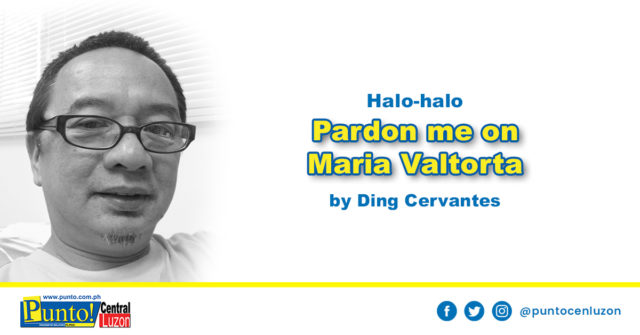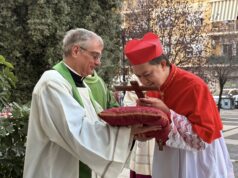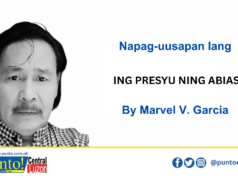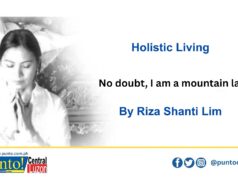PARDON ME for often copiously quoting Maria Valtorta under the presumption that readers a priori take her as being credible. As a matter of fact, one prominent reader commented to me that Valtorta’s work was in the Vatican’s list of banned books.
Right, her work was once in the list, until Pope Paul VI lifted the ban, not only on her writings but also the controversial writings of other mystics. But wasn’t Padre Pio, now a saint, once banned from officiating Mass publicly?
The first pope to have read Valtorta was Pope Pius XII (reigned from 1939 up to his death in 1958). In 1947 even before Valtorta passed away in 1961, he was given a 12-volume typewritten copy of Valtorta’s writings which was then titled “The Poem of the Man-God” by the three Servites of Mary who were believers of Valtorta: Fr. Corrado M. Berti, O.S.M. (professor of dogmatic and sacramental theology at the Pontifical Marianum Theological Faculty in Rome from 1939 onward, and Secretary of that Faculty from 1950 to 1959), Fr. Romualdo M. Migliorini (Prefect Apostolic in Africa), and Fr. Andrew M. Cecchin (Prior of the International College of the Servites of Mary in Rome).
Pope Pius XII COMMANDED them (emphasis mine) to publish it, saying: “Publish it just as it is. There is no need to give an opinion as to whether it is of supernatural origin. Those who read it will understand. One hears of many visions and revelations. I will not say they are all authentic; but there are some of which it could be said that they are.”
I stumbled on the work of Valtorta at the bargain corner of a bookstore during preinternet days (at least in the Philippines) and it came in four volumes with cheap, brown pages. I still have no idea how I got attracted to the drab looking volumes amid a big pile of mostly colorful books up for bargain. I read them then later came across Pius XII’s statement: “Those who read it will understand.”
It is understandable why the devil would block widening readership of Valtorta’s work: it is a more detailed version of the New Testament and therefore not only more interesting, but also more instructive. Yet, the Holy Spirit had reasons, certainly omniscient, why it had to be Valtorta, in our times, to give us a detailed New Testament, not to mention portions of the old.
Indeed, many have been published to destroy the credibility of Valtorta’s work. The so-called Resistance Dominicans claimed that Valtorta died in an insane asylum, a claim belied by witnesses.
World renowned Mariologist Fr. Gabriel Roschini, O.S.M. A pre-Vatican II Consultant to the Holy Office and the Sacred Congregation for the Causes of Saints), wrote on Valtorta’s death on Oct. 12, 1961 as follows:
“The rector of the Third Order of the Servants of Mary, Fr. Innocenzo M. Rovetti, assisted her at her deathbed. At the very moment the priest recited the words: Proficiscere, anima Christiana, de hoc mundo (“Depart, o Christian soul, from this world”), Maria breathed her last. Ten years after Maria Valtorta’s death, on October 12, 1971, her mortal remains were exhumed from the earth and placed in the family niche. On the 2nd of July 1973, however, with civil and ecclesiastic permissions, they were transferred from Viareggio to Florence to be entombed in the Capitular Chapel in the Grand Cloister of the Basilica of the Most Holy Annunciation [the mother church of the Servite Order], where the tomb of Maria Valtorta is still venerated.”
Roschini also noted that after her death, “People noticed that her right hand – with which she had written so many sublime texts – contrarily to her left hand, retained the color, suppleness, and beauty of someone alive rather than dead.”
Valtorta was noted to have suffered from Alzheimer’s in her last days. It is interesting to note that after Valtorta lost her mental faculties due to this disease, Marta Diciotti, the woman who had taken care of her for years after she was rendered lame by an attack from a deranged person almost three decades earlier, discovered Valtorta’s letter addressed to one Madre Teresa, saying she has offered her intelligence to God as the last thing she could off er Him as a victim soul.
Because Valtorta wrote so much details about episodes in the New Testament which she was privileged to see, hear, feel, smell and even touch, scientists in all fields had ample opportunities to study her credibility. Geographers, botanists, biologists, climatologists, historians, Bible experts, etc., examined her narratives of eras and places and times, etc. she had witnessed as she – her limbs already paralyzed – lay in bed in her home. All were scientifically accurate.
Quite importantly in Valtorta’s work are comments from Jesus Himself to explain, clarify the scenes she was allowed to witness. This part of her work made clear to me why a detailed version of the New Testament had to be given in our times. Times so troubled.





